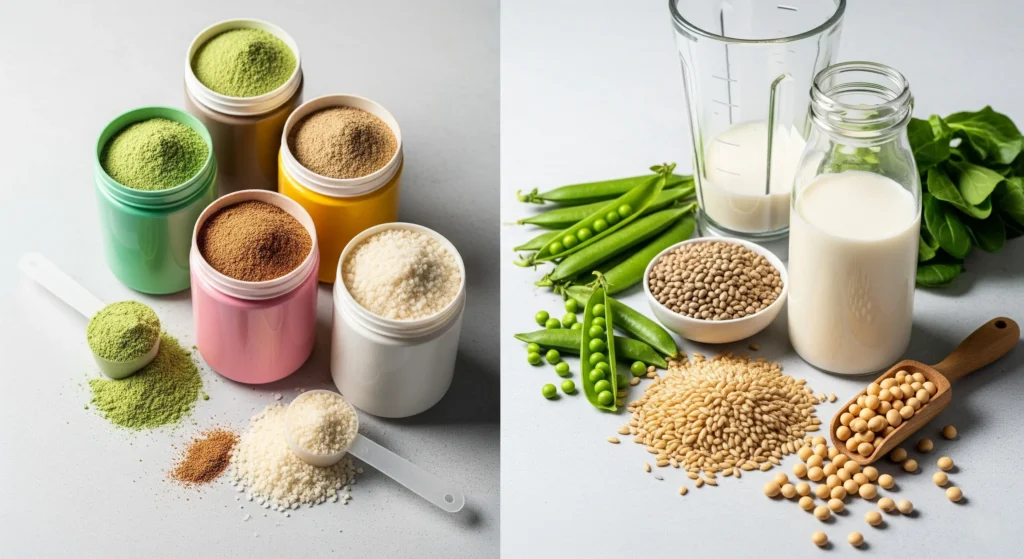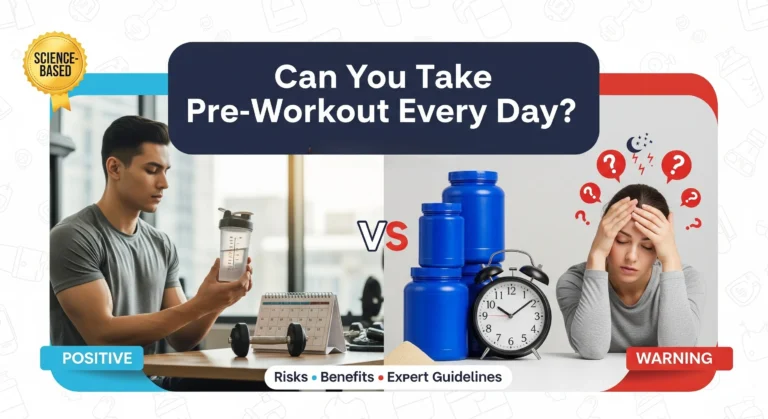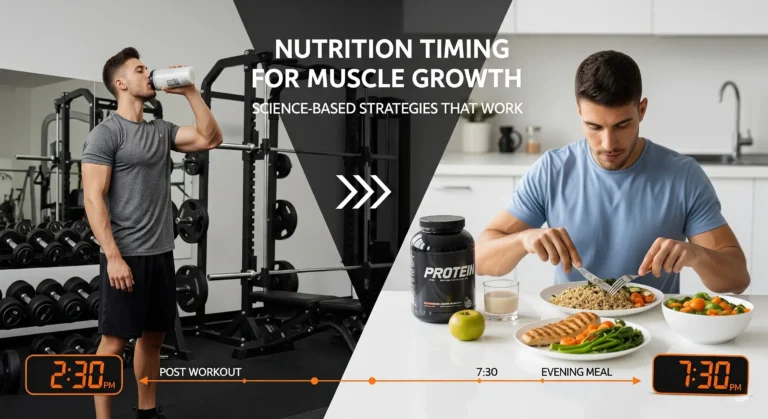
Did you know that 73% of vegans struggle to meet their daily protein requirements through whole foods alone? I learned this the hard way when I first switched to a plant-based diet three years ago and watched my muscle gains completely stall.
After months of trial and error with different protein powders, timing strategies, and supplement combinations, I’ve discovered what actually works for building and maintaining muscle on a vegetarian or vegan diet. Protein supplements for vegetarians and vegans have come a long way in recent years, but the supplement world can still be confusing, especially when you’re avoiding animal products. The right knowledge makes all the difference!
Whether you’re a seasoned vegan athlete or just starting your plant-based journey, this guide will help you navigate the best protein supplements available and choose the ones that align with your goals, budget, and taste preferences.
Understanding Plant-Based Protein Quality and Amino Acid Profiles
Man, I wish someone had explained amino acids to me when I first went vegan. I was chugging protein shakes thinking all proteins were created equal, and honestly, I was dead wrong.
Here’s the thing about plant proteins – they’re not “incomplete” like some people claim, but they do have different amino acid profiles than animal proteins. I remember reading this scary article about how plant proteins were “inferior,” and it nearly made me quit my vegan experiment altogether. Thank goodness I dug deeper!
The truth is way more nuanced. Complete proteins contain all nine essential amino acids your body can’t make on its own. Most animal proteins are complete, while most plant proteins are missing one or two amino acids in significant amounts. But here’s what changed everything for me – you don’t need to get all amino acids in one meal or even one food source.
Your body has this amazing amino acid pool that stores these building blocks for about 4-6 hours. So if you eat rice (low in lysine) for lunch and beans (high in lysine) for dinner, your body combines them like a puzzle. Pretty cool, right?
I learned this lesson when I started tracking my protein intake with an app called Cronometer. Turns out, I was getting plenty of protein overall, but I was missing leucine consistently. Leucine is crucial for muscle protein synthesis – it’s like the starter button for building muscle. Once I started paying attention to leucine-rich plant foods and supplements, my recovery improved dramatically.
The Protein Digestibility Corrected Amino Acid Score (PDCAAS) is another factor that matters, though it’s not the end-all-be-all that some people make it out to be. Soy protein scores a perfect 1.0, while pea protein comes in around 0.89. But in real-world application, the difference isn’t as dramatic as these numbers suggest, especially if you’re eating a varied diet.
Top Pea Protein Supplements: Benefits and Best Brands
I’ll be honest – my first experience with pea protein was rough. The texture reminded me of drinking sand, and the taste was like someone mixed grass clippings with chalk. But I’m stubborn, so I kept experimenting, and now pea protein is my go-to choice.
Pea protein has become the rockstar of plant-based supplements for good reason. It’s hypoallergenic, so even people with soy, dairy, or gluten sensitivities can usually handle it. Plus, it’s got a solid leucine content – about 8.5% compared to whey’s 11%. That might not sound close, but when you consider that pea protein is about 80-85% protein by weight, you’re getting roughly 2.1 grams of leucine per 25-gram serving.
The brand that finally converted me was Naked Pea. No artificial flavors, no gums, just pure pea protein isolate. Yeah, it’s not winning any taste contests, but mixed with frozen berries and a banana, it’s totally drinkable. I’ve also had great results with NOW Sports Pea Protein and Bulk Supplements Pea Protein Isolate.
Here’s a trick I learned the hard way – blend pea protein with cold liquid for at least 30 seconds. The longer blending time really helps with the gritty texture that turns so many people off. I also discovered that adding a pinch of sea salt actually improves the flavor. Sounds weird, but it works.
One thing that surprised me about pea protein is how well it keeps me full. The fiber content is minimal, but something about its amino acid profile seems to trigger satiety hormones better than other plant proteins I’ve tried. This makes it perfect for anyone trying to manage their weight while building muscle.
The only downside I’ve found is that pea protein can cause some digestive issues if you jump in too quickly. Start with half scoops for the first week, especially if you’re not used to higher protein intakes. Trust me on this one – I learned it the uncomfortable way.
Hemp Protein Powder: Complete Nutrition Beyond Just Protein
Hemp protein was my gateway drug into plant-based supplements, mainly because I was intrigued by all the other nutrients it packed beyond just protein. When I first tried it five years ago, the options were limited and honestly pretty terrible tasting. Today’s hemp proteins are a completely different story.
What makes hemp special isn’t just that it’s a complete protein – though it technically is – but all the bonus nutrition you get. We’re talking omega-3 and omega-6 fatty acids in an ideal 3:1 ratio, magnesium, iron, and zinc. It’s like getting a multivitamin mixed into your protein shake.
The protein content is lower than other options at around 50-60%, but I’ve found that hemp protein works incredibly well as part of a blended approach. I’ll use hemp protein in my morning smoothie for the sustained energy and save higher-protein options for post-workout.
My favorite hemp protein right now is Manitoba Harvest Hemp Pro 70. The “70” refers to the protein percentage, and they’ve really nailed the processing to minimize that hemp-y taste that can be off-putting. Nutiva Organic Hemp Protein is another solid choice, especially if you’re budget-conscious.
Here’s something most people don’t know about hemp protein – it’s naturally high in arginine, an amino acid that supports nitric oxide production. I noticed better pumps during workouts when I started using hemp protein regularly, and I’m pretty sure this is why.
The fiber content in hemp protein is substantial – around 8 grams per serving in most products. This is great for digestive health, but it can slow protein absorption. I’ve found that hemp protein works best earlier in the day rather than immediately post-workout when you want faster absorption.
One concern I hear about hemp protein is drug testing. Let me put this to rest – properly processed hemp protein contains less than 0.3% THC, which is nowhere near enough to show up on any standard drug test. I’ve been tested multiple times for work, and hemp protein has never been an issue.
Rice and Soy Protein: Comparing the Classics
Before pea protein became popular, rice and soy were basically your only plant-based options. I’ve used both extensively, and they each have their place in a well-rounded supplement strategy.
Brown rice protein was my first plant protein love affair. It mixes incredibly smooth – smoother than most whey proteins I’ve tried – and the taste is pretty neutral. The protein quality is solid too, with a good amino acid profile, though it’s a bit low in lysine.
Growing Naturals Brown Rice Protein remains my top pick after trying probably a dozen brands. It’s clean, mixes well, and doesn’t have that chalky aftertaste some rice proteins develop. Sunwarrior Classic Plus is another excellent option, especially their vanilla flavor.
The main limitation with rice protein is that you need to pair it with something higher in lysine to get a complete amino acid profile. I usually combine it with hemp seeds or pea protein. It’s also not as satiating as pea or hemp protein, so I tend to use it more for convenience than as a meal replacement.
Now, soy protein – this one’s complicated because of all the controversy surrounding it. I avoided soy for years because of fears about estrogen and “man boobs,” but the research simply doesn’t support these concerns for most people. Multiple studies show that soy protein is just as effective as whey for building muscle.
The texture of soy protein isolate is fantastic – creamy and smooth without any grittiness. It also has the highest biological value of any plant protein, meaning your body can use it very efficiently. Jarrow Formulas Iso-Rich Soy has been my go-to when I’m using soy protein.
The main issue I have with soy isn’t health-related – it’s environmental and ethical concerns about soy farming practices. If you choose soy, look for organic, non-GMO options like NOW Sports Soy Protein Isolate.
Between rice and soy, I lean toward rice protein for daily use and save soy for specific situations where I need maximum protein efficiency, like during cutting phases when calories are restricted.
Innovative Plant Protein Blends and Superfoods
This is where things get really exciting in the plant-based protein world. The innovation happening with protein blends and superfood additions has completely changed what’s possible with plant-based nutrition.
I started experimenting with blended proteins about two years ago when I realized I was getting bored with single-source options. The first blend I tried was Vega Sport Performance Protein, which combines pea, pumpkin seed, organic sprouted navy bean, and alfalfa proteins. The amino acid profile was impressive, but honestly, the taste was pretty rough.
Since then, I’ve found some absolute game-changers. Garden of Life Raw Organic Protein combines sprouted brown rice, pea, chia, flax, and several other plant proteins. What makes it special is the addition of probiotics and enzymes to support digestion. I noticed significantly less bloating compared to single-source proteins.
Orgain Organic Plant-Based Protein is another blend that’s won me over, mainly because of how clean it tastes and mixes. They use pea, brown rice, and chia proteins with organic fruits and vegetables. It’s one of the few plant proteins my non-vegan friends actually enjoy drinking.
The superfood trend in protein powders has produced some interesting options too. I’ve been experimenting with Amazing Grass Protein Superfood, which includes spirulina, chlorella, and a bunch of greens along with the protein blend. The nutrient density is incredible, though the taste takes some getting used to.
Spirulina deserves special mention here. It’s about 60% protein by weight and contains all essential amino acids. The problem is the taste – it’s intensely earthy, almost fishy. I can handle about a teaspoon mixed into fruit smoothies, but more than that becomes overwhelming.
Sacha inchi protein is another emerging option that’s caught my attention. It’s from a Peruvian seed and has a complete amino acid profile with high omega-3 content. Sunfood Sacha Inchi Protein is the only brand I’ve found that’s reasonably priced, and while it’s not winning any taste awards, the nutritional profile is impressive.
The main advantage of these innovative blends is convenience – you’re getting multiple protein sources plus additional nutrients in one scoop. The downside is cost and sometimes questionable taste combinations.
Protein Timing and Dosage for Vegetarian Athletes
Timing your protein intake as a plant-based athlete requires a bit more strategy than just chugging a shake after your workout. I learned this through months of mediocre results before I figured out what actually works.
The traditional advice about the “anabolic window” – that 30-minute post-workout period where you supposedly need protein immediately – isn’t as critical as we once thought. But for plant proteins, timing does matter more because of their different absorption rates and amino acid profiles.
I’ve found that splitting my protein intake throughout the day works much better than trying to get everything in one or two large doses. My current approach is 20-25 grams of protein every 3-4 hours, which usually means protein at breakfast, lunch, post-workout, and dinner.
Pre-workout protein is something I initially ignored, but it’s become crucial for my training. About 30-45 minutes before lifting, I’ll have 10-15 grams of easily digestible protein – usually rice protein mixed with some fruit juice. This gives my muscles amino acids to work with during the workout and seems to improve my recovery.
Post-workout is where I use my highest-quality protein blend, usually combining pea and rice proteins to get a complete amino acid profile quickly. I aim for 25-30 grams within an hour of finishing my workout, though the exact timing isn’t as critical as consistency.
Here’s something most people mess up – they calculate their protein needs based on total body weight instead of lean body mass. If you’re 180 pounds at 20% body fat, your lean mass is about 144 pounds. For muscle building, you want 0.8-1.2 grams of protein per pound of lean mass, not total weight.
The quality of plant proteins also means you might need slightly more total protein than someone using animal sources. I typically recommend adding about 10-20% more protein to account for the lower bioavailability of some plant proteins.
Nighttime protein is often overlooked, but it’s become part of my routine. A slow-digesting protein like hemp or a blend with fiber can provide amino acids throughout the night when your body is doing most of its recovery work.
Budget-Friendly Plant Protein Options That Don’t Compromise Quality
Let’s be real – protein supplements can get expensive, especially when you’re going through a container every two weeks like I do. I’ve spent way too much money on fancy packaging and marketing claims, so I’ve learned to focus on value without sacrificing quality.
Bulk Supplements is my secret weapon for affordable plant proteins. Their Pea Protein Isolate costs about half what you’d pay for name brands, and the quality is identical. No fancy packaging, no marketing budget, just pure protein. I buy the 11-pound bag and it lasts me about three months.
NOW Sports is another brand that consistently delivers quality at reasonable prices. Their Pea Protein and Rice Protein are both excellent values, and they’re third-party tested for purity. The taste isn’t as refined as premium brands, but mixed into smoothies, you can’t tell the difference.
Here’s a money-saving trick I discovered accidentally – buying unflavored proteins and adding your own flavoring is way cheaper than buying pre-flavored versions. A container of unflavored pea protein plus some vanilla extract and stevia costs about 60% of what you’d pay for vanilla pea protein.
Generic store brands have really improved in recent years. Walmart’s Great Value Plant-Based Protein is surprisingly good for the price, and Target’s Good & Gather line has a decent pea protein blend. I wouldn’t use these as my primary protein source, but they’re fine for occasional use or when budget is tight.
Buying in bulk obviously saves money, but only if you’ll actually use it before it goes bad. Protein powders typically last 18-24 months unopened, but once you open them, you’ve got about 6-8 months before they start losing potency and developing off flavors.
Amazon’s Subscribe & Save program can offer significant discounts on protein powders, sometimes 15-20% off regular prices. I’ve saved hundreds of dollars over the years by setting up subscriptions for proteins I use regularly.
One mistake I made early on was buying cheap proteins that were bulked up with fillers. Always check the protein content per serving – it should be at least 20 grams per 25-gram serving for a quality product. If it’s much lower, you’re paying for rice flour or other cheap fillers.
Taste, Texture, and Mixability: Making Plant Protein Enjoyable
I’m not gonna lie – plant proteins used to be pretty rough from a taste standpoint. When I first went vegan, my protein shakes tasted like punishment. But either my taste buds adapted, or the industry has really stepped up their game, because things are much better now.
Texture is usually the biggest hurdle with plant proteins. Pea protein can be chalky, hemp protein can be gritty, and rice protein sometimes develops this weird film in your mouth. I’ve learned tricks to deal with all of these issues.
The secret to smooth plant protein shakes is liquid temperature and blending time. Cold liquids work way better than room temperature – I keep my almond milk in the fridge specifically for this. Blend for at least 45 seconds, longer if you’re using a less powerful blender.
Adding frozen fruit helps with both taste and texture. Frozen banana is my go-to because it adds natural sweetness and creates a creamy, almost ice cream-like consistency. Frozen berries work great too and add antioxidants as a bonus.
For mixing on the go, plant proteins are trickier than whey. They don’t dissolve as easily, so you need a good shaker bottle with a wire whisk ball. I swear by BlenderBottle Pro series – the extra wide mouth makes it easier to clean, which is crucial with plant proteins that can develop funky smells if not cleaned properly.
Flavor-wise, vanilla is usually your safest bet with plant proteins. Chocolate can be hit or miss because the cocoa sometimes clashes with the earthy taste of pea or hemp protein. Unflavored gives you the most flexibility to create your own flavor combinations.
Here are some flavor combinations that have saved my sanity: pea protein + peanut butter + banana; hemp protein + cocoa powder + dates; rice protein + vanilla + cinnamon. Experiment and find what works for your taste buds.
Baking with plant proteins is where things get really interesting. Rice protein works great in pancakes and muffins, while pea protein can make baked goods a bit dense. I’ve had good luck substituting up to 25% of flour with plant protein in most baking recipes.
The key to making plant proteins enjoyable is accepting that they’re different from whey, not inferior. Once you stop trying to make them taste like dairy proteins and work with their natural flavors, everything becomes much more pleasant.
Conclusion
Finding the right protein supplement as a vegetarian or vegan doesn’t have to be overwhelming. The key is understanding your specific needs, whether that’s building muscle, maintaining weight, or simply ensuring adequate protein intake.
Remember that the “best” protein supplement is the one you’ll actually use consistently. Start with one of the top-rated options from this guide, give it at least 2-3 weeks to assess how your body responds, and don’t be afraid to experiment with different brands and types.
Your plant-based fitness journey is unique, and your protein supplement should support your individual goals and preferences. The plant protein market has exploded with quality options in recent years, so you’re no longer limited to chalky, awful-tasting powders that make you question your dietary choices.
Whether you choose pea protein for its amino acid profile, hemp for its complete nutrition, or one of the innovative blends combining multiple plant sources, you’re making a choice that supports both your health and your values. The key is consistency, proper timing, and finding flavors and textures that you actually enjoy.
Have you tried any of these plant proteins? Drop a comment below and share your experience – I’d love to hear what’s worked best for you! Your feedback helps other people on similar journeys find their perfect protein match.



